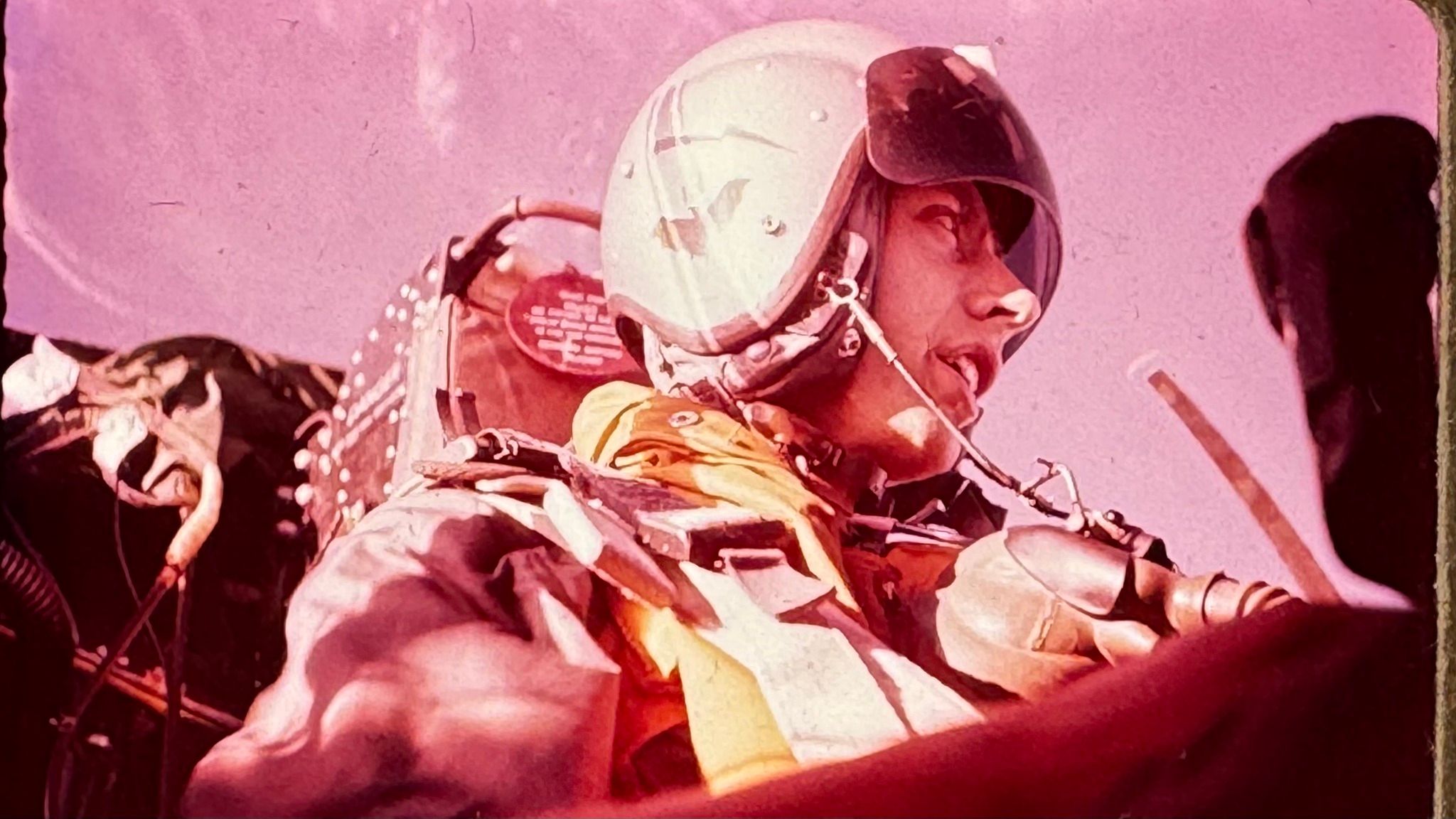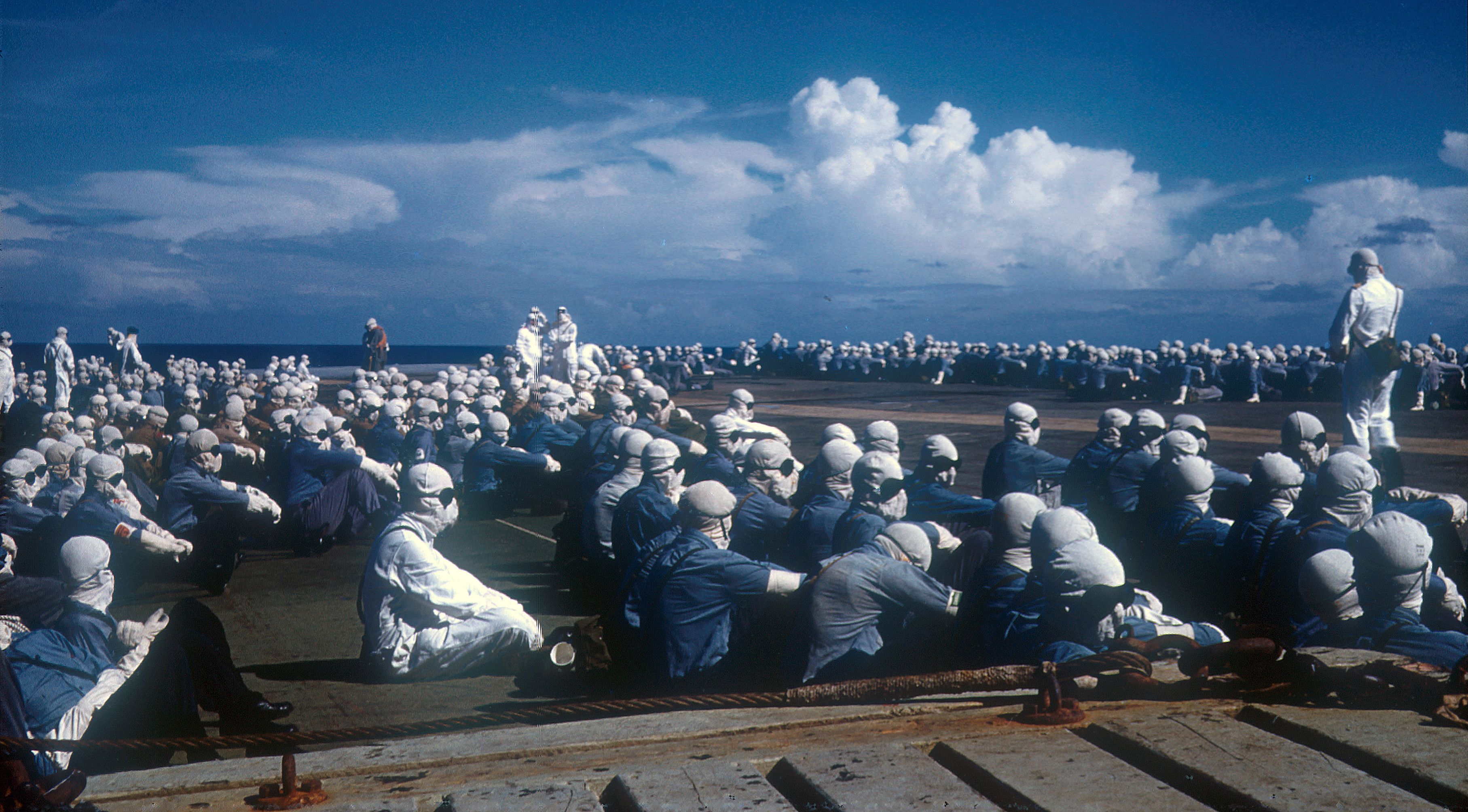It goes up and you get a stem and the fireball, like a great big fireball, rises fairly fast. It’s through the troposphere, through the ionosphere and it aims up into the stratosphere, but I’m not sure how high it eventually goes, I think it stays in the stratosphere probably.
Yeah.
And the reactions are going on in the fireball.
Yeah.
What’s in the stem is history, that was what was happening minutes ago, of course. So that wasn’t what they wanted, they wanted what’s going now on the filters. So they wanted you as high as possible, if you could be, on the top of the fireball. I never got to the top of a fireball, I was at the bottom of a fireball. But that was enough. And of course, the turbulence, you can see in the photos on the films, all the clouds turning over, turmoil and so on. And trying to fly into that above your recognised speed and keep the crew pacified and then saying… and they had to open and do the shutters with a switch they had, because they used the electrics which ran the pumps in the tip tanks, the extra fuel tanks, which we took off, and the electrics which were out there, they rewired into the filters. So they had switches to open and close the filter things, and they had to open them at the right time and so on.
Yeah.
And the aim was, to get into the densest cloud you could find, because that was more active. But the densest cloud was also the most turbulent. And I came out of one and said, ‘Ooh, there’s a very black cloud just down there’, and I said it on the RT, ‘There’s a very black cloud just down below…’ ‘Don’t descend! Don’t descend! Climb! Climb!’ ‘Yes, yes, I’m climbing, I’m climbing.’ And they just shouted, ‘That’s probably just cirrus, forget it’. Because with all this reactivity going on, it’s forming its own cloud, its own weather, its own rain. One of the problems, they had pouring rain, purple rain, and then black rain. It was filthy, the black rain, at 55,000 feet. I mean it’s unheard of, the meteorologists would have a nightmare.
[ends at 0:02:25]











